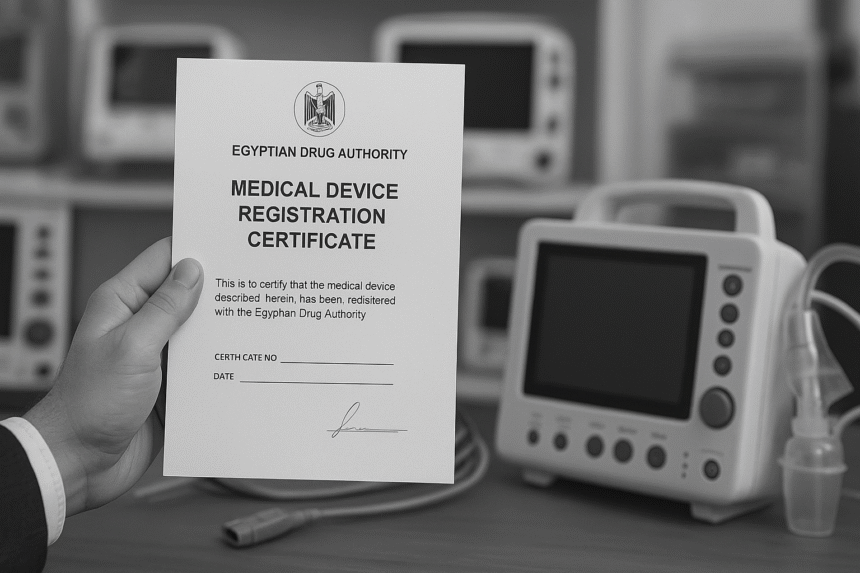How to Register a Medical Device in Egypt for Export
Exporting medical devices from Egypt is a growing opportunity for manufacturers, especially with increasing demand across Africa and the Middle East. But before your product can legally leave the country, it must be registered with the Egyptian Drug Authority (EDA).
The process can feel complex—but with the right guidance, you can move from application to approval with fewer delays. This guide breaks down each step in simple, practical terms so you can register your medical device correctly and start exporting with confidence.
Who This Is For / When to Use It
This guide is for:
- Egyptian manufacturers of medical devices
- International companies exporting from Egypt through a local partner
- Import-export consultants working in the medical sector
- Entrepreneurs starting a medical supplies trading company
Use this guide when:
- You’re preparing to launch a new medical product line
- You need to meet regulatory requirements for tenders or partnerships
- Your buyer requires official registration before import
Step-by-Step Instructions
Step 1: Identify the Device Class
The first step is to classify your device under Egyptian regulations:
- Class I: Low risk (e.g., bandages)
- Class II: Medium risk (e.g., infusion pumps)
- Class III: High risk (e.g., pacemakers)
Classification determines:
- The required documentation
- Review timelines
- The level of scrutiny by the EDA
Tip: If your device is already classified under FDA, CE, or WHO guidelines, you can use that as reference.
Step 2: Appoint a Legal Agent in Egypt
Foreign companies must register through a local legal agent or importer. The agent will:
- Submit the registration file on your behalf
- Handle communications with the EDA
- Be listed on certificates and approvals
Warning: Choose a reliable agent—changing later can delay re-approval.
Step 3: Prepare the Technical File
This is the core of your application. It includes:
- Product description and specifications
- Labeling and packaging samples
- Instructions for use (in Arabic and English)
- Quality management certificates (e.g., ISO 13485)
- CE mark, FDA approval, or other international certifications (if available)
Avoid this mistake: Submitting incomplete or non-translated documents.
Step 4: Submit the Dossier to the Egyptian Drug Authority (EDA)
The application is submitted to the Medical Devices Department at the EDA. Submission includes:
- Hard copies + digital version of the technical file
- Application form
- Payment receipt for applicable government fees
Expected timelines:
- Class I: 1–2 months
- Class II: 3–6 months
- Class III: Up to 12 months
Step 5: Wait for Review and Request for Clarifications (if any)
EDA will review the file and may:
- Approve directly
- Request clarifications or additional documents
- Reject if non-compliant
Pro tip: Respond promptly to avoid resetting the queue.
Step 6: Receive Approval Certificate
Once approved, you’ll receive:
- EDA registration certificate (valid for 5 years)
- Approval letter with authorized product details
You can now legally:
- Export the device from Egypt
- Include the EDA approval in tenders or compliance documents
- Use the certificate in marketing and customs documentation
Mini Case Example: Local Exporter Gained Market Access in GCC
An Egyptian company manufacturing Class II surgical instruments wanted to export to the UAE. But the distributor required an Egyptian Drug Authority certificate as part of its due diligence.
They hired a legal consultant to guide the process, appointed a qualified agent, and submitted a full technical file with ISO and CE documents. The approval came through in four months. As a result, they secured the contract and began shipping under the EDA license.
Checklist: EDA Medical Device Registration for Export
Closing Thoughts + Call-to-Action
Registering a medical device in Egypt for export can be straightforward if you follow the right process and prepare thoroughly. From classification to submission, each step builds toward credibility and market access.
If you’re exporting from Egypt and want help with the registration or documentation, book a compliance consultation .



Leave a Reply